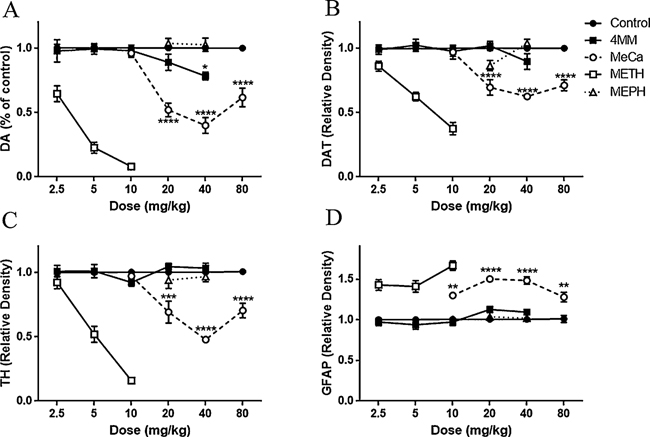Fig. 5.
Effects of 4 MM and MeCa on markers of dopaminergic toxicity. Mice were treated with 4 MM (4X- 2.5, 5, 10, 20, or 40 mg/kg), MeCa (4X- 10, 20, 40, or 80 mg/kg) or saline vehicle every 2 h for a total of four injections at the given dose. Levels of DA (A), DAT (B), TH (C) and GFAP (D) were determined 48 h after drug exposure. Data are means S.E.M. (for 4 MM: control, n = 18; 2.5 mg/kg, n = 8; 5 mg/kg, n = 8; 10 mg/kg, n = 9; 20 mg/kg, n = 12; 40 mg/kg, n = 12; for methcathinone (MeCa): control, n = 15; 10 mg/kg, n = 6; 20 mg/kg, n = 6; 40 mg/kg, n = 11; 80 mg/kg, n = 10). Each experiment was performed three times, with differing doses, and results were then pooled for analysis. One-way ANOVA, *p < 0.05, **p < 0.01, ***p < 0.001, ****p < 0.0001 compared with controls, with Bonferroni’s post-hoc test. Reprinted from Anneken et al. (2017b) with permission from the American Society for Pharmacology and Experimental Therapeutics. METH and MEPH data were reprinted for comparison from Anneken et al. (2015) with permission from John Wiley and Sons, Inc. These data are not statistically compared to 4-MM and MeCa in the present figure, but METH elicited highly significant toxic effects on each measure in the original experiments, whereas MEPH had no significant effects.

